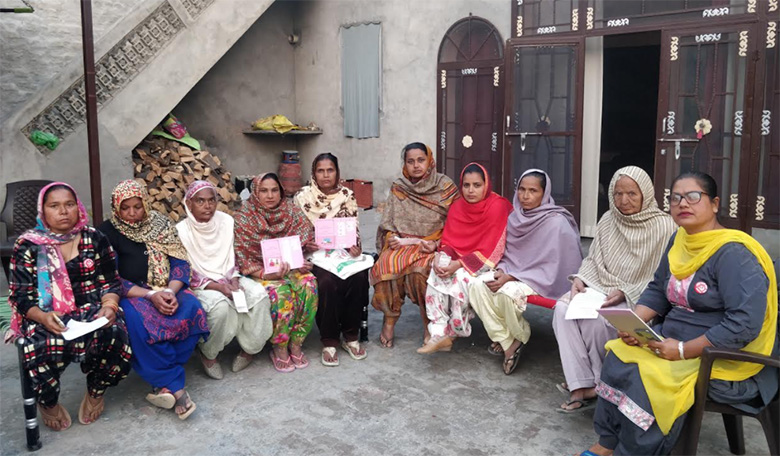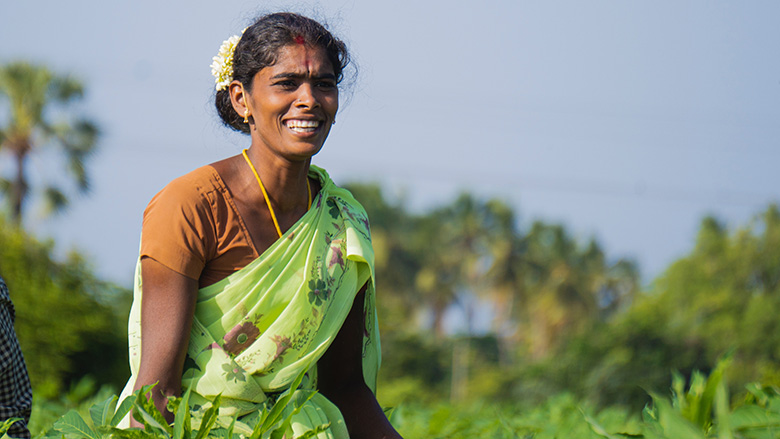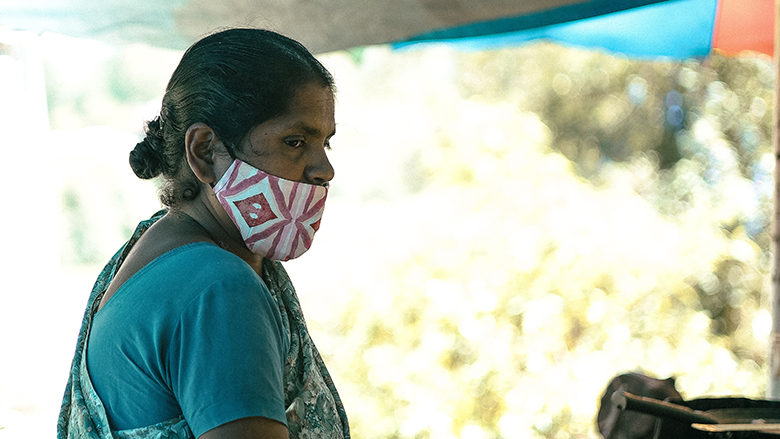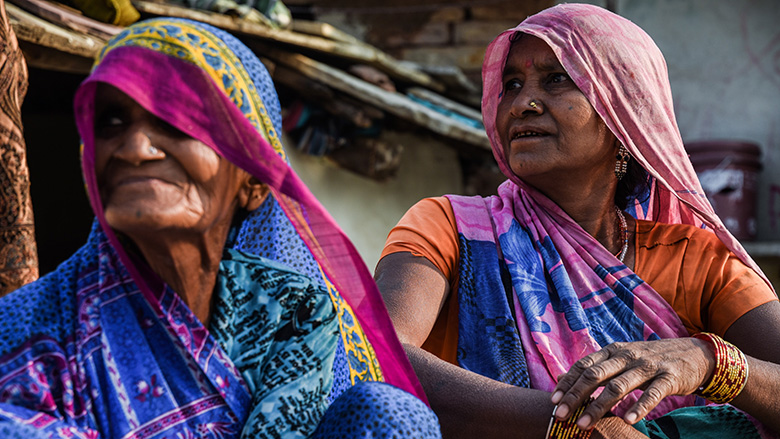Women are being led into debt by male relatives taking out loans in their name. Will greater external governance see more empowered by female-focused microfinance?
It was 37 degrees in the loan office, but when Amaya*, found out that she was nearly a million rupees in debt, she suddenly felt ice cold.
She decided she wanted to start her own clothing business but faced confusion from the loan agent, who showed her that she already had two loans with them. Those loans had been taken out by her husband using her documents.
The loan agent quickly pulled out a chair as she found out that her husband was more than three behind on loan repayments. She owed more than she could ever earn in a year. When she took out her now ‘third’ microfinance loan, even that was taken from her when she got home.
“In India, things are different if a wife is taking a loan it doesn’t mean a wife is using that loan,” said Vivek Gupta. “The husband is the head of the family so how a loan is being used it is I think it’s more of a decision by a husband than a wife.”

Microfinance aims to provide financial services, including insurance, savings and small loans to people from low socio-economic communities. Organisations often seek to loan to women such as Amaya*, as they form the largest group of unbanked people at nearly 1 billion.
More than 74% of microfinance clients are women. Research has shown that when microfinance is successful, it greatly benefits women. An increase in microfinance by around 15% has been shown to decrease gender inequality by about a half.
Alberto Posso explains that female microfinance allows people to save for a rainy day and invest in employment. “It’s not without its critiques but in a world where we have few resources, it tends to be a pretty useful thing,” he said.
However, when it comes to who uses the loan, Dr Lamia Karim highlights that it may not be fair to attach all female microfinance to women. As they are not always the ones in control of the money.
Lamia found that even when women are aware of the loan being taken out they are often just “errand runners” for their husbands. Who then run the business themselves and use the gendered foundation of microfinance to their benefit.
“When a woman has access to a loan, she is obligated to transfer it to her husband, kin or social superiors,” said Lamia “The woman as the loan-taking subject is now accountable to two forms of authority, her husband/family and the NGO/ group of borrowers who are jointly responsible for the timely repayment of her loan.”
Research published in April 2021 showed that over 60% of women reported that their husbands made the decision to take out the loans first. With it being more common that the men completed the investment activities.
This has not improved significantly in the last ten years. A study of 90 women with microfinance loans in 2011 found that only 26% of them had been the decision-maker. They also found men have reportedly worked directly with male loan officers in order to take out microfinance products in their wives names.
“I know that in certain households when women bring the income they can be almost forced to spend it in a way that the husband wants,” said Alberto Posso. “At the same time a lot of the literature paints the husband as this sort of evil villain and that’s not necessarily the case a lot of the time and a lot of the time you get very supportive husbands as well.”
To Todd Watkins, it’s like the principle of Yin and Yang, the good and the bad of female microfinance.
“Although in some circumstances and in some places it is evident that the control of the finances has not been as dramatically changed toward women as [they] might have been,” he said. “I think that it’s also clear that in some other contexts […] it actually does increase women’s empowerment and women’s control over resources and decision making within the family.”
Todd explains, although it is common knowledge that men take out loans in their wives names, it is hard to find much research about it. For something that is ‘assumed’ to always happen. There is a lack of testimony about it. Todd believes it could be due to the nature of those doing the research.
“It’s probably going to be not as evident if I, a white guy from Pennsylvania walking into a home in the middle of Africa, in Zambia,” said Todd. “I don’t think I’m going to hear those stories directly and I don’t have that connection socially, or emotionally with any of the women that I met in those contexts.”
Todd believes that does not mean it doesn’t exist but that he was just not in a position to have seen it directly.
Whilst speculation has swirled on whether the pandemic and the decrease of loan governance has seen a rise in men taking out female microfinance, it is too early to say. With fewer organisations visiting communities on the ground predictions swirl of potential misused loans.
When it comes to women getting enough external support and protection after they receive their loans Todd explains it is quite mixed. “Depending on the microfinance institution that you’re talking about, I think some gets spectacularly well supported,” said Todd. “And other institutions that are really just there to make a business out of it and they don’t see themselves as having a social mission, even though they have a lot of women who are clients of the organisation.”
Todd believes that Finca is an organisation with a good social mission especially when it regards women.

Scott Graham from Finca explained that empowering women was the reason why they went into microfinance and their whole theory of change hinges on the role women play in their household.
“As the primary custodians of the well-being of that family, and particularly the health, education, and welfare of their children,” he said. “Women … have to be at the centre of any kind of development effort, not just microfinance.”
Scott explains that when it comes to supporting female microfinance it is vital to acknowledge them as unique borrowers.
“Women are distinct as a client segment, what their specific needs are because they have a different journey in life … and they have different needs for financial services than men,” he said.
Finca research found that 22% of women have limited product awareness so are unable to name more than two products from each category (loans, savings, mobile banking and insurance). Compared to a lower 14% of men.
Men come to Finca with a higher baseline level of technical fluency explains Scott. Women might have been using their husband’s smartphones, but they haven’t had the opportunity to master the whole digital world.
“So when we are bringing these customers in, we have to be prepared to actually provide them with more training and support and onboarding than we do for a man for example,” said Scott.
Finca have also found that even within women themselves, age and education play such a role in the type of client they are. “Women are much more differentiated by education, for example, by age, a woman at 40 is in a very different stage of her life, but then a woman at 20,” said Scott. “Whereas a man at 20, and a man of 40 are not so different.”
“We need to have a different product for a woman who’s at 20 versus one who’s at 50. Because their life circumstances are so different because of the role that they have in their family,” he explained.
How women prefer to bank is even different as they prefer agency banking but men prefer ATMs. Its shows that because agents businesses are open longer hours, usually during the weekends and even after business hours women need this flexibility.
This is why it is so important external governance protects and provides education for these women, explained Scott.
Todd Watkins explained that in his research he too found the gender differences with how women participate and pay their loans back. “In fact,” he said. “I think, historically why the industry drifted in that direction it was if the women were just better customers.”
External governance is therefore extremely important as all of this has shown as women need distinct support as they are a very different type of client than men. This is clear from the ways that Finca are altering their operations to support women.

There is one darker side to microfinance that even more external governance may not fix. That is the evidence that microfinance leads to domestic violence. As tension to pay back loans was found in the late 1990s in a rural village in Bangladesh that 70% of women reported an increase of violence or aggressive behaviour in their homes. Whilst only 18% reported decreased.
“This loan is creating a lot of problems in households, suppose you have some liability then there must be some tension with the family on repaying those loans those husbands start beating their wives when they have no solutions inside,” said Vivek Gupta. “It’s quite common in villages.”
Alberto Posso explains that when empowerment is often measured domestic violence is not considered.
“As women begin to have more disposable income and they say well I’ve made this money now I’d like to have a say as to how it spent this can actually lead to domestic violence which is obviously disempowering women massively,” he said. “Some of the existing measures of empowerment don’t necessarily include domestic violence as one of the components and therefore that that bit of the story can get missed.”
Todd believes that has changed in recent years. “There was some evidence … many years ago that there had been issues of marital strife that might have been increased, intrahousehold challenges that increased because the men were either, you know, reacting to the women getting more authority and more empowered, or more access to resources or more social stature,” he said.

He believes that is no longer the norm and projects such as Kudumbashree point to a positive future for microfinance in India
When it comes to empowerment in microfinance there have been many in India but there are also some successful initiatives. Kudumbashree is an example of how internal governance has been very successful in female microfinance.
Set up in 1997, it is a poverty eradication and women empowerment programme implemented by the Government of Kerala. By September 2021 it has 5 million women members. Making it the world’s largest empowerment project.
“Kudumbashree is usually cited as to how India should be using microcredit so there are some examples like this from Kerala which is quite encouraging where these can grow and perform better,” said Professor R. Ramakumar.
Women are able to join Joint Liability Groups (JLGs) where they can come together to lease land and partake in group cultivation. Many women in the region now earn nearly Rs. 650 a day farming coconuts. Something that many could not have imagined possible previously.
Kudumbushree and its focus on female governance have been proven to have a positive impact on the lives of women. Their involvement not only led to social, economic, and political empowerment but also has an impact on their health awareness and utilization of healthcare services.
“When there is a disaster or natural disaster or something else happening like Covid you involve them in a big way and make them part or institutionalise their participation in the process of governance,” said Professor R. Ramakumar.
Ramakumar believed that involving women in governance will see more benefit from female-focused microfinance.
Although Todd believes there is still a long way to go to improve female microfinance, his research has led him to a few recommendations. Especially if all microfinance will empower women the same way the Kudumbushree project does.
“It’s a diverse portfolio of financial services that you have access to that are convenient, that are affordable, and that are well-managed, and transparent,” said Todd. “I think where pricing is transparent and the deals that people are signing, are all out there. That’s the kind of consumer protection and women’s protection you’d really want.”
Finca’s plans for female empowerment are very similar but stress the importance of thinking of women in every part of its policy and governance.
“We have to look across the organisation and think do we have the policies in place that are not just women-friendly, but actually one that prioritises women’s advancement, inside and outside,” said Scott. “It’s not enough to be equal like we have to put a differential weight on empowering women, within the organisation and also as clients.”
